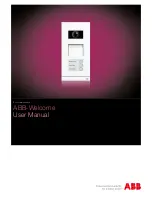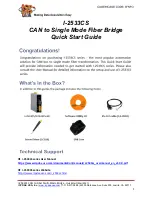
Note
•
The DHCP Server feature is disabled by default. To enable the feature, refer to "4.4.3 Enabling the
DHCP Server Feature".
•
An IP telephone and the mother board/DSP card cannot request IP addresses from a DHCP server
on another LAN (connected through an IP network). They can only receive IP addresses from a
DHCP server on the same LAN. Therefore, when IP telephones are located on several LANs, a
DHCP server is required on each LAN. If a DHCP server is not present on the LAN, IP addresses for
IP telephones and the mother board/DSP card on that LAN must be assigned manually.
•
When the Control Box has been set to act as a DHCP client, use an external DHCP server to assign
IP address information automatically.
•
When the Control Box is set as the DHCP client and cannot receive appropriate IP addressing
information from an external DHCP server, the Control Box keeps using the previous effective IP
addressing information and checks whether any overlapping of IP addresses exists. If the IP address
of the Control Box overlaps with another IP address, the Control Box displays a warning to encourage
changing the IP address of the Control Box.
5.1.3 VLAN (Virtual LAN)
VLANs are logical segments within a corporate LAN. By assigning VLAN settings to IP telephones, it is
possible to separate the packets transmitted by an IP telephone according to the type of data and specify
which VLAN each data type will be sent over. This allows you to avoid generating unnecessary network
traffic on each segment and to reduce the load on the network. As a consequence, speech quality can be
assured. Therefore, we recommend using the VLAN feature to perform VoIP communication effectively.
Notice
The Control Box’s LAN port does not support VLAN tagging. Therefore, connect the Control Box’s LAN
port to a port of the switching hub that is set to "Untagged", and the IP telephone to a port set to "Trunk",
to allow VLAN tagging. Consult your network administrator for details.
5.1.4 Jitter Buffer
When voice signals are packetised and transmitted, individual packets can take different paths through the
network and arrive at the destination at varied timings. This is referred to as "jitter", and it can cause
degradation in speech quality. To compensate for jitter problems, the "jitter buffer" accumulates the packets
temporarily for processing.
To set the size of the jitter buffer, refer to "9.3.1 Control Box Configuration—[1-1] Configuration—Slot—Site
Property—Main—VoIP-DSP Options" in the PC Programming Manual.
5.1.5 Voice Activity Detection (VAD)
VAD conserves bandwidth by detecting silent periods during a call and suppressing the packets of silence
from being sent to the network. This feature can be enabled or disabled for codec G.711.
5.1.6 Network Configuration
You must evaluate the structure of the existing network to see if a VoIP network can be implemented. Below
are the points that should be evaluated.
Is it possible to have static IP addressing?
IP telephones on the network always perform VoIP communications through the Control Box. Therefore, the
Control Box must be assigned static IP addresses, which must be programmed to each IP telephone on the
network.
5.1.3 VLAN (Virtual LAN)
Installation Manual
53
Summary of Contents for VL-VN1700
Page 4: ...Introduction 4 Installation Manual ...
Page 24: ...2 2 2 System Capacity 24 Installation Manual ...
Page 38: ...3 5 Starting the Control Box 38 Installation Manual ...
Page 50: ...4 7 Programming UM System Manager Features 50 Installation Manual ...
Page 56: ...5 2 Port Security 56 Installation Manual ...
Page 65: ...Note Installation Manual 65 ...
Page 66: ...Note 66 Installation Manual ...
Page 67: ...Note Installation Manual 67 ...
















































